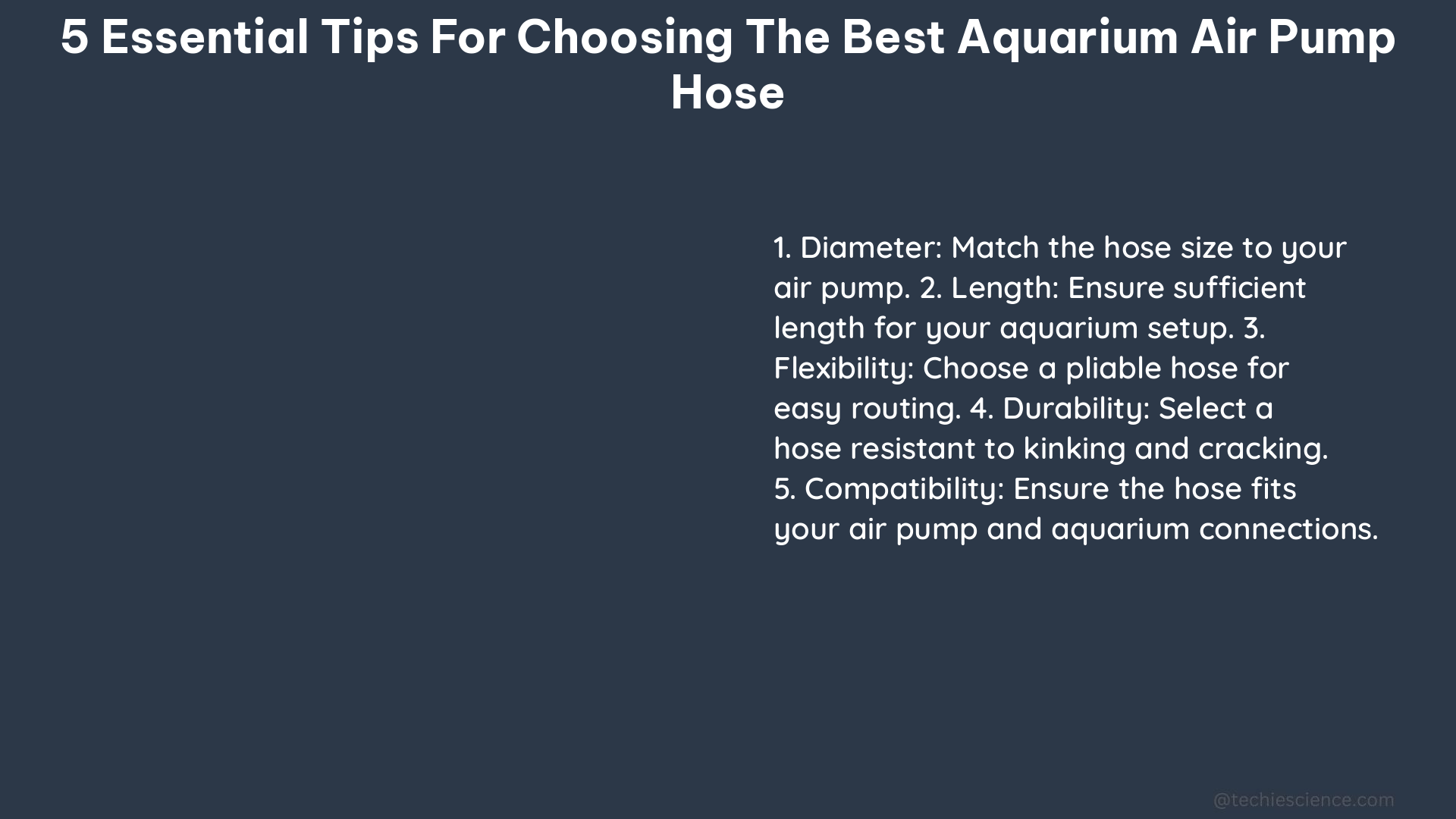When it comes to setting up a thriving aquarium, the choice of the right air pump hose can make a significant difference in the overall performance and efficiency of your aquarium’s aeration system. Here are 5 essential tips to help you select the best air pump hose for your aquarium:
1. Size and Length Considerations
The standard diameter for most aquarium air pump hoses is 3/16 inches (4.76 mm). This size is widely compatible with the majority of air pumps on the market. However, it’s crucial to measure the air pump’s outlet size to ensure a proper fit.
The length of the air pump hose should be carefully considered based on the specific setup and requirements of your aquarium. As a general guideline, it’s recommended to purchase the longest length available in the desired type, as the excess can be easily trimmed to the required size. Typical air pump hose lengths range from 3 feet (0.91 m) to 25 feet (7.62 m), catering to a wide variety of aquarium sizes and configurations.
2. Material and Durability Selection

The two most common materials used for aquarium air pump hoses are silicone and rubber. Each material offers unique properties that may suit different preferences and requirements.
Silicone Hoses:
– Matte texture, does not harden over time
– Flexible and kink-resistant
– Suitable for aquarists who prefer a matte finish and want to minimize the need for frequent hose replacements
Rubber Hoses:
– Shiny appearance, can become hard over time
– Kink-resistant and provides better visibility for checking the air check valve
– Ideal for aquarists who prioritize the ability to easily inspect the air check valve’s functionality
Both silicone and rubber hoses are suitable for aquarium use, and the choice often comes down to personal preference and the specific requirements of the aquarium setup.
3. Airflow and Pressure Optimization
The airflow and pressure of the air pump hose are crucial factors to consider, as they directly impact the efficiency of the aeration system. The airflow depends on the depth of the air exit, while the pressure is typically measured in units such as PSI (pounds per square inch) or MPa (megapascals).
As an example, an air pump with a flow rate of 4 L/min and a pressure of 0.016 MPa will have different flow rates at different depths. At a depth of 161 cm (0.016 MPa), the airflow will stop, while at a depth of 80 cm, the flow should be around 2 L/min.
To ensure optimal airflow and pressure, it’s essential to match the air pump hose specifications with the requirements of your aquarium’s depth and the capabilities of the air pump itself.
4. Noise Level Considerations
The noise level of the air pump hose can be an important factor, especially for aquarium owners who prefer a quiet environment. Some air pumps can be quite noisy, while others are designed to be quieter.
When selecting an air pump hose, it’s crucial to choose one that is compatible with the specific air pump you are using and does not produce excessive noise. Excessive noise can be disturbing for both the aquarium inhabitants and the aquarium owner.
5. Cost and Maintenance Factors
The cost and maintenance requirements of the air pump hose should also be considered. While some hoses may be more expensive initially, they may require less frequent replacement, which can save money in the long run.
Additionally, some hoses may be easier to maintain and clean than others, which can impact their overall cost and longevity. Factors such as the hose’s resistance to algae buildup, ease of disinfection, and ability to withstand repeated cleaning can all contribute to the long-term cost and maintenance considerations.
By carefully considering these 5 essential tips, you can ensure that you select the best air pump hose for your aquarium, optimizing the performance, efficiency, and overall experience of your aquatic ecosystem.
References:
– Help with Choosing a New Air Pump
– Is there a relatively inexpensive way to measure aquarium air pump flow rate?
– Air Line Tubing
– Aquarium Air Pump Guide
– Aquarium Air Pumps: Everything You Need to Know
